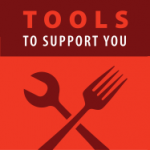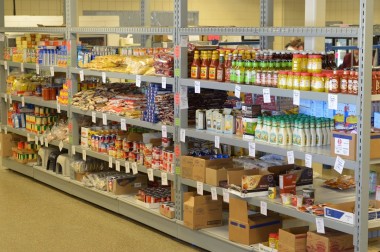Brown County developed a simple messaging campaign to help support their Healthy Food Pantry Initiative. The “Food Drive Five” is promoted in flyers, social media, and press coverage. The “Food Drive Five” includes: Protein Foods: peanut butter, nuts, seafood and poultry; Fruits packed in juice, dried or sauced fruits; Soups that are low in sodium and that contain proteins and vegetables; Whole grain cereals and pastas; and Colorful vegetables.
Establish a nutrition policy
Adoption of a nutrition policy allows pantries to clarify the steps they’ll take to promote their guests’ health. A nutrition policy can guide food purchases made to supplement donated foods. A strong nutrition policy might also include language restricting the types of food donations the pantry is willing to receive. In general, nutrition policies should follow a healthy eating pattern as outlined by the Dietary Guidelines for Americans.
Sample nutrition policy language
Adoption of a nutrition policy allows pantries to clarify the steps they’ll take to promote their guests’ health. A nutrition policy can guide food purchases made to supplement donated foods. A strong nutrition policy might also include language restricting the types of food donations the pantry is willing to receive. In general, nutrition policies should follow a healthy eating pattern as outlined by the Dietary Guidelines for Americans.
Sample nutrition policy language
Here are some ideas for building relationships and educating donors: COMMERCIAL DONORS COMMUNITY DONORSEducate your donors
Community food donations can be a major source of food for pantries. It is important to educate donors about the types of food the pantry wishes to receive. Donors often prefer to give to a pantry what it needs and are grateful for any ideas offered. Making the pantry’s needs and principles clear help others to be a part of the vision, kindness, and generosity that makes a community strong.
 Press release
Press release
Stocking a healthy food pantry checklist
Stocking a healthy food pantry donor letter
Sack Hunger package suggestions
Brown County Food Drive 5 Toolkit
In a recent survey conducted by UW-Extension, food pantry guests expressed an overwhelming desire for more fresh produce. Here is a list of ideas to consider for finding more fresh produce for your pantry:Find fresh produce




